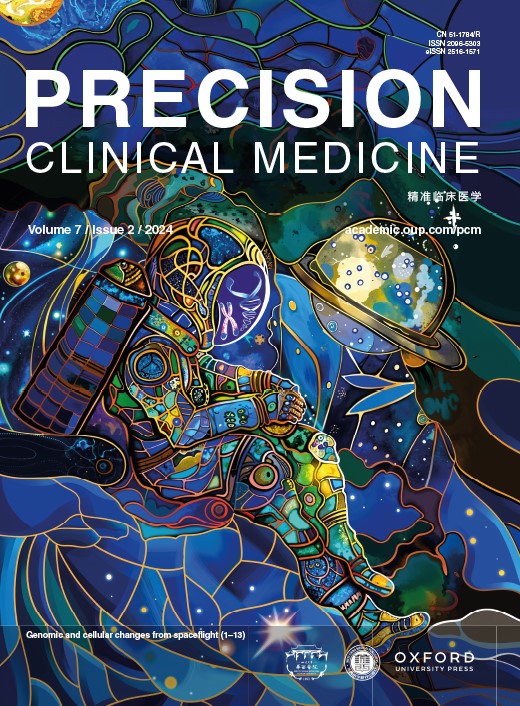Cytokine storm promoting T cell exhaustion in severe COVID-19 revealed by single cell sequencing data analysis
IF 5.1
4区 医学
Q1 MEDICINE, RESEARCH & EXPERIMENTAL
引用次数: 8
Abstract
Abstract Background Evidence has suggested that cytokine storms may be associated with T cell exhaustion (TEX) in COVID-19. However, the interaction mechanism between cytokine storms and TEX remains unclear. Methods With the aim of dissecting the molecular relationship of cytokine storms and TEX through single-cell RNA sequencing data analysis, we identified 14 cell types from bronchoalveolar lavage fluid of COVID-19 patients and healthy people. We observed a novel subset of severely exhausted CD8 T cells (Exh T_CD8) that co-expressed multiple inhibitory receptors, and two macrophage subclasses that were the main source of cytokine storms in bronchoalveolar. Results Correlation analysis between cytokine storm level and TEX level suggested that cytokine storms likely promoted TEX in severe COVID-19. Cell–cell communication analysis indicated that cytokines (e.g. CXCL10, CXCL11, CXCL2, CCL2, and CCL3) released by macrophages acted as ligands and significantly interacted with inhibitory receptors (e.g. CXCR3, DPP4, CCR1, CCR2, and CCR5) expressed by Exh T_CD8. These interactions formed the cytokine–receptor axes, which were also verified to be significantly correlated with cytokine storms and TEX in lung squamous cell carcinoma. Conclusions Cytokine storms may promote TEX through cytokine-receptor axes and be associated with poor prognosis in COVID-19. Blocking cytokine-receptor axes may reverse TEX. Our finding provides novel insights into TEX in COVID-19 and new clues for cytokine-targeted immunotherapy development.单细胞测序数据分析揭示细胞因子风暴促进重症COVID-19 T细胞衰竭
背景证据表明,细胞因子风暴可能与COVID-19患者的T细胞衰竭(TEX)有关。然而,细胞因子风暴与TEX之间的相互作用机制尚不清楚。方法通过单细胞RNA测序数据分析,从COVID-19患者和健康人的支气管肺泡灌洗液中鉴定出14种细胞类型,探讨细胞因子风暴与TEX的分子关系。我们观察到一种新的严重耗尽的CD8 T细胞亚群(Exh T_CD8)共同表达多种抑制受体,以及两种巨噬细胞亚群,它们是支气管肺泡细胞因子风暴的主要来源。结果细胞因子风暴水平与TEX水平的相关分析表明,细胞因子风暴可能促进重症COVID-19中TEX的发生。细胞间通讯分析表明,巨噬细胞释放的细胞因子(如CXCL10、CXCL11、CXCL2、CCL2和CCL3)作为配体,与Exh T_CD8表达的抑制受体(如CXCR3、DPP4、CCR1、CCR2和CCR5)显著相互作用。这些相互作用形成了细胞因子-受体轴,也被证实与肺鳞状细胞癌的细胞因子风暴和TEX显著相关。结论细胞因子风暴可能通过细胞因子受体轴促进TEX,与COVID-19患者预后不良有关。阻断细胞因子受体轴可逆转TEX。我们的发现为研究TEX在COVID-19中的作用提供了新的见解,并为细胞因子靶向免疫治疗的发展提供了新的线索。
本文章由计算机程序翻译,如有差异,请以英文原文为准。
求助全文
约1分钟内获得全文
求助全文
来源期刊

Precision Clinical Medicine
MEDICINE, RESEARCH & EXPERIMENTAL-
CiteScore
10.80
自引率
0.00%
发文量
26
审稿时长
5 weeks
期刊介绍:
Precision Clinical Medicine (PCM) is an international, peer-reviewed, open access journal that provides timely publication of original research articles, case reports, reviews, editorials, and perspectives across the spectrum of precision medicine. The journal's mission is to deliver new theories, methods, and evidence that enhance disease diagnosis, treatment, prevention, and prognosis, thereby establishing a vital communication platform for clinicians and researchers that has the potential to transform medical practice. PCM encompasses all facets of precision medicine, which involves personalized approaches to diagnosis, treatment, and prevention, tailored to individual patients or patient subgroups based on their unique genetic, phenotypic, or psychosocial profiles. The clinical conditions addressed by the journal include a wide range of areas such as cancer, infectious diseases, inherited diseases, complex diseases, and rare diseases.
 求助内容:
求助内容: 应助结果提醒方式:
应助结果提醒方式:


